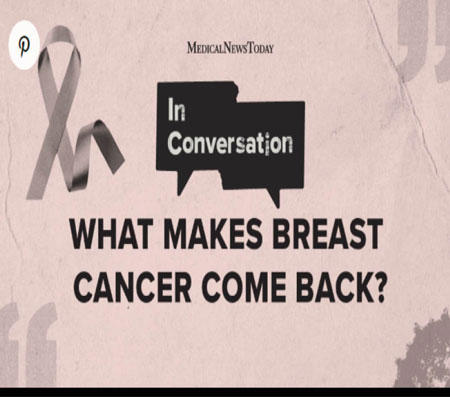Millions of people live with breast cancer, the most common form of cancer worldwide — and also, in most cases, one of the most treatable. However, even after successful treatment, breast cancer can recur. How does breast cancer spread, why does it sometimes come back, and can lifestyle changes help improve the prognosis for people with a breast cancer diagnosis? We discuss these and other questions in our monthly podcast.
According to data from the World Health Organization (WHO), in 2020 alone there were 2.3 million womenTrusted Source globally who received a diagnosis of breast cancer. Men can also develop breast cancer.
In the United States, approximately 264,000 womenTrusted Source and 2,400 men receive a breast cancer diagnosis each year, according to the Centers for Disease Control and Prevention (CDC). In the United Kingdom, there are about 55,500 new cases of breast cancer in women, and approximately 370 in men, as per Cancer Research UK data.
Breast cancer is thus easily the most commonly occurringTrusted Source form of cancer, but it is also one of the most treatable. “The average 5-year survival rate for women in the [US] with non-metastatic invasive breast cancer is 90%. The average 10-year survival rate for women with non-metastatic invasive breast cancer is 84%,” states the American Society of Clinical Oncology (ASCO) Foundation.
However, there are many different types of breast cancer, some more aggressive than others, which spread more easily and can be more difficult to treat. But why and how does cancer spread from the initial tumor to other parts of the body?
And why does breast cancer sometimes come back, or recur, in people whose initial breast cancer treatment was successful?
The current installment of our In Conversation podcast discusses these and other questions about breast cancer and recurrence risk. Our guests are Dr. Rachael Natrajan and Dr. Liz O’Riordan.
Dr. Natrajan is head of the functional genomics team in the Breast Cancer Now Toby Robins Research Centre at the Institute of Cancer Research (ICR) in London.
She specializes in the study of different breast cancer subtypes through the genetic analysis of cancer tumors, with a view to developing new treatments specific to each of these subtypes.










